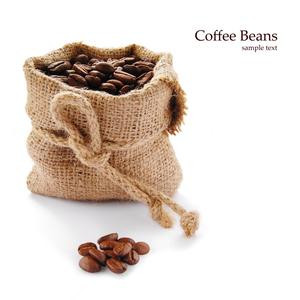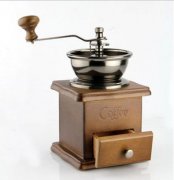Barista training knowledge: types of coffee baking utensils

Coffee is popular mainly because of the aroma formed after roasting and the taste when drinking. The coffee raw bean itself does not have any special taste, but roasting completely changes and reorganizes the substances inside the raw bean to form a new structure, thus bringing out the mellow flavor of coffee, and coffee roasting is the coffee knowledge that baristas need to know.
The baking tools, the roaster, are divided into three types: direct fire, semi-hot air direct fire and hot air. At present, the latter two are the mainstream.
Direct fire: the earliest baking tool used by human beings. Disadvantages: slow heat conduction of iron; long baking time; waste of hot gas; raw beans contact with the drum wall for too long, easy to be scorched, resulting in bitter and scorched taste; debris in and out of the tube attached to the surface of coffee beans will make the flavor turbid.
Semi-hot air direct fire type: 1870-1920 German Fan Guban improved and manufactured. In 1907, the German Perfect roaster began to use this concept, using gas heating, and there is a fan, half of the hot air into the drum, half to the outer heating drum. So far, the German Probat drum roaster is famous all over the world. In addition, Derek of Idaho took the lead in using gas-activated infrared heat source in 1987 to make temperature control more accurate and become the first brand in North America.
Semi-hot air direct type, directly heat the drum with the fire source, and bring the hot air into the drum at the same time, increase the heating speed, and blow away the debris, so a balanced and clean coffee bean is produced.
Hot air, a pioneering work of the 20th century, uses hot air to bake coffee beans to improve roasting efficiency. The Semenro roaster, a large hot air roaster, was made by Bourne in 1934 in the United States.
Flow-bed roaster, with hot air blowing raw beans, let it fly up and down. In 1976, Michael, an American. Schweizi designed a flow bed roaster. Eon, a well-known Australian coffee expert. Berstein also designed and manufactured fluidized bed roasters. When using this roaster, the coffee beans fall after being blown to the high point and are roasted by hot air again, which can make the coffee beans roast evenly. However, the lack of metal drum smoldering, some people think that the lack of a taste.
Coffee roasting is a process of high temperature decomposition, which completely changes the substance inside the raw bean, produces new compounds, and recombines to form aroma and mellow flavor. This effect only happens at high temperatures.
In fact, in the coffee processing process, baking is the most difficult step, it is a kind of science, but also a kind of art. The baking process is divided into three stages:
Dehydration, in the early stage of baking, raw beans begin to absorb heat, and the water inside gradually evaporates. At this time, the color gradually changed from cyan to yellow or light brown, the silver skin began to fall off, and the faint smell of grass could be smelled. The main function of this stage is to remove moisture, which accounts for about half of the baking time. Because water is a good conductor of heat transfer, it helps to bake the internal substance of coffee beans. Therefore, although the aim is to remove water, the baker will make good use of the temperature of the water and control it properly so that it will not evaporate too quickly.
Decompose at high temperature, bake to about 160 degrees, the water inside the beans will evaporate into gas, and begin to remove the outside of the coffee beans. At this time, the interior of the raw bean changed from endothermic to exothermic, and the first burst sound appeared. After the first burst, it turns to endothermic again, and the internal pressure of the coffee bean is extremely high, up to 25 atmospheric pressure. Heat and pressure begin to deconstruct the original tissue to form new compounds that create the taste and taste of coffee. When it reaches about 190 degrees, the conversion between endothermic and exothermic occurs again. Of course, high temperature cracking continues to occur, coffee beans from brown to dark brown, gradually into the stage of heavy roasting.
Cooling, coffee should be cooled immediately after roasting, quickly stop the high temperature cracking, and lock the flavor. Otherwise, the high temperature in the beans will continue to act and will burn off the aromatic substances. There are two cooling methods, one is air-cooled, the other is water-cooled. The air-cooled type is slow, but it is clean and does not pollute, and it can retain the mellow flavor of coffee, so it is used for fine coffee. Water-cooled coffee beans are sprayed with a layer of water mist on the surface of coffee beans, causing the temperature to drop rapidly, requiring precise calculation, and increasing the weight of roasted coffee beans, generally used in commercial coffee roasting.
Burst sound, raw beans from endothermic to exothermic, the internal substances out of the body, will form an obvious sound. The first time is louder, crisp and scattered, and the second is quiet, meticulous and concentrated. Because of the high correlation between bursting sound and temperature, it can fully represent the drying temperature, which is an important basis for bakers to judge the baking degree.
Important Notice :
前街咖啡 FrontStreet Coffee has moved to new addredd:
FrontStreet Coffee Address: 315,Donghua East Road,GuangZhou
Tel:020 38364473
- Prev

Coffee training equipment: classic hand coffee grinder
- Next

The History of the pressure Pot the Origin of frenchpress
French pressure pot frenchpress, as early as 30 years ago, Alfred Pitt, the founder of Pitt Coffee, a famous roaster in the Berkeley district of the West Bank of the United States, made every effort to promote this convenient, fast, and effective way of brewing. Pitt believes that only the use of French pressure can perfectly demonstrate the charming and mellow flavor of deep-roasted coffee. The piston pot method is called the pressure method in France and the United States in the United States.
Related
- Detailed explanation of Jadeite planting Land in Panamanian Jadeite Manor introduction to the grading system of Jadeite competitive bidding, Red bid, Green bid and Rose Summer
- Story of Coffee planting in Brenka region of Costa Rica Stonehenge Manor anaerobic heavy honey treatment of flavor mouth
- What's on the barrel of Blue Mountain Coffee beans?
- Can American coffee also pull flowers? How to use hot American style to pull out a good-looking pattern?
- Can you make a cold extract with coffee beans? What is the right proportion for cold-extracted coffee formula?
- Indonesian PWN Gold Mandrine Coffee Origin Features Flavor How to Chong? Mandolin coffee is American.
- A brief introduction to the flavor characteristics of Brazilian yellow bourbon coffee beans
- What is the effect of different water quality on the flavor of cold-extracted coffee? What kind of water is best for brewing coffee?
- Why do you think of Rose Summer whenever you mention Panamanian coffee?
- Introduction to the characteristics of authentic blue mountain coffee bean producing areas? What is the CIB Coffee Authority in Jamaica?

